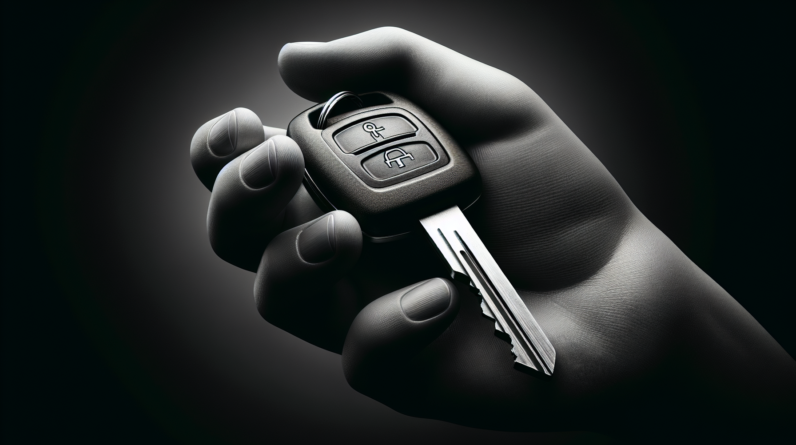
If you’ve found yourself in the position of needing high-risk car insurance, you may be wondering just how much it’s going to cost you. With an assortment of factors determining insurance rates, such as your driving history and credit score, navigating the world of high-risk car insurance can be a daunting task. However, fear not! In this article, we’ll break down the various elements that contribute to the cost of high-risk car insurance, giving you a clearer picture of what to expect and how to find the best rates that fit your needs.
Factors that Determine High Risk Status
Driving Record
Your driving record plays a significant role in determining your high risk status. If you have a history of accidents, speeding tickets, or other traffic violations, insurers may consider you a high risk driver. Multiple offenses within a short period of time can increase your premiums even further.
Age and Gender
Age and gender are additional factors that can impact your high risk status. Generally, young drivers under the age of 25 and male drivers tend to face higher insurance premiums due to statistical data showing that they are more likely to be involved in accidents.
Type of Vehicle
The type of vehicle you drive can also affect your risk level. Insurers consider factors such as the car’s make, model, age, safety features, and repair costs. Sports cars, luxury vehicles, and cars with a high likelihood of theft or vandalism are often associated with higher premiums.
Credit History
Your credit history can be a factor in determining your high risk car insurance rates. Insurers use credit-based insurance scores to assess the likelihood of you filing a claim. If you have poor credit, it can result in higher premiums as insurers perceive you as a higher risk customer.
Location
Your geographical location has a significant impact on your insurance rates. If you reside in an area with high crime rates or a high number of accidents, your premiums may be higher. Urban areas often have more expensive insurance rates compared to rural areas due to factors such as traffic congestion and higher accident rates.
Insurance Claims History
Your previous insurance claims history can also label you as a high risk driver. Frequent or substantial insurance claims can lead insurers to view you as a higher risk and increase your premiums accordingly.
Types of High Risk Car Insurance
SR-22 Insurance
SR-22 insurance is a special type of high risk car insurance that is often required for drivers with certain violations, such as driving under the influence (DUI) or driving without insurance. An SR-22 form is filed with the state, certifying that you have the required amount of liability insurance coverage.
Non-Standard Auto Insurance
Non-standard auto insurance is designed for drivers who do not meet the criteria for traditional insurance coverage. It is specifically tailored for high risk drivers and provides the necessary coverage at higher premiums compared to standard insurance policies.
Assigned Risk Plans
Assigned risk plans are state-mandated insurance programs that ensure every driver can obtain the required minimum insurance coverage, regardless of their risk level. These plans assign high risk drivers to insurance companies, spreading the risk among insurers in the market. Premiums for assigned risk plans are generally higher than those for regular insurance.

Average Cost of High Risk Car Insurance
National Average
The average cost of high risk car insurance varies depending on several factors. However, on average, high risk drivers can expect to pay significantly more than their low risk counterparts. According to industry estimates, high risk car insurance can cost around 25% to 50% higher than regular car insurance premiums.
State-by-State Variations
The cost of high risk car insurance can also vary significantly from state to state. Each state has its own regulations, minimum coverage requirements, and insurance market dynamics. For example, states with higher rates of accidents and uninsured drivers tend to have higher premiums for high risk coverage.
Comparison with Regular Car Insurance
When comparing high risk car insurance to regular car insurance, the difference in premiums becomes apparent. Regular car insurance is typically more affordable, as it is designed for drivers with clean driving records and lower risk profiles. However, if you have a history of high risk factors, be prepared for higher premiums.
Tips for Finding Affordable High Risk Car Insurance
Shop Around and Compare Quotes
When seeking high risk car insurance, it is important to shop around and obtain quotes from multiple insurers. Different insurers have different pricing models and risk assessment criteria, so comparing quotes can help you find the most affordable option for your specific circumstances.
Improve Your Driving Record
One effective way to reduce your high risk status and potentially lower your insurance premiums is to improve your driving record. By practicing safe and responsible driving habits, avoiding traffic violations, and maintaining a clean record, you can demonstrate to insurers that you are a lower risk driver.
Consider Higher Deductible
Opting for a higher deductible can help lower your high risk car insurance premiums. A deductible is the amount you are responsible for paying before your insurance coverage kicks in. By choosing a higher deductible, you assume a greater portion of the risk, which can lead to reduced premiums.
Bundle Insurance Policies
Another way to save on high risk car insurance is by bundling multiple insurance policies with the same company. Combining your auto insurance with other types of coverage, such as homeowner’s or renter’s insurance, can often result in a discount on your premiums.
Maintain Good Credit
Improving your credit score can positively impact your high risk car insurance rates. By paying bills on time, reducing debt, and managing credit responsibly, you can boost your credit score. This may result in lower insurance premiums, as insurers consider a good credit history as an indicator of responsible behavior.
Take Safety Courses
Completing approved defensive driving or safety courses can demonstrate your commitment to safe driving and potentially lead to lower high risk car insurance rates. These courses teach valuable skills and provide practical knowledge to help you become a safer and more responsible driver.
Additional Factors that Affect High Risk Car Insurance Cost
Marital Status
Marital status can influence high risk car insurance rates. Married individuals often enjoy lower insurance premiums compared to single individuals, as statistical data indicates that married drivers are generally involved in fewer accidents.
Annual Mileage
The annual mileage you drive can impact your high risk car insurance rates. In general, the more miles you drive, the higher the chances of being involved in an accident. Keeping your annual mileage low can help reduce your insurance premiums, as insurers perceive lower risk associated with less driving.
Occupation
Believe it or not, your occupation can affect your high risk car insurance rates. Certain professions are associated with lower accident rates, while others may involve more frequent driving or higher levels of stress. Insurers take these factors into consideration when determining your premiums.
Coverage Limits and Types
The coverage limits and types you choose for your high risk car insurance can affect your costs. Higher coverage limits and additional types of coverage, such as comprehensive and collision, come with higher premiums. Assess your needs carefully and choose coverage options that strike a balance between protection and affordability.
Driving Habits
Your driving habits, including where and when you drive, can impact your high risk car insurance rates. If you regularly commute during busy hours or in congested areas, insurers may view you as having a higher risk of accidents. On the other hand, if you have a clean record and primarily drive in low-risk conditions, your premiums may be lower.
Previous Insurance Coverage
Your previous insurance coverage history can also influence the cost of your high risk car insurance. If you have maintained continuous insurance coverage without any lapses, insurers may view you more favorably and potentially offer lower premiums. On the other hand, gaps in coverage or cancellation can result in higher rates.
Steps to Take When Transitioning from High Risk to Regular Car Insurance
Maintain Clean Driving Record
To transition from high risk to regular car insurance, maintaining a clean driving record is crucial. A record free of accidents and traffic violations will help demonstrate to insurers that you are a responsible and low-risk driver.
Improve Credit Score
Working on improving your credit score can also assist in transitioning to regular car insurance. By paying bills on time, reducing debt, and managing your credit responsibly, you can gradually improve your credit score, which may result in lower insurance premiums.
Opt for Defensive Driving or Safety Courses
Enroll in defensive driving or safety courses to enhance your driving skills and knowledge. These courses demonstrate your commitment to safe driving and may help you qualify for lower insurance rates as you transition to regular car insurance.
Maintain Continuous Insurance Coverage
Maintaining continuous insurance coverage is essential when transitioning from high risk to regular car insurance. Avoid lapses or cancellations in coverage, as they can negatively impact your ability to obtain regular insurance or result in higher premiums.
Frequently Asked Questions
What Should I Do if I Get Classified as High Risk?
If you are classified as high risk, it is important to understand the factors that led to this categorization. Take steps to address those factors, such as improving your driving record, maintaining good credit, and practicing safe driving habits. Additionally, shop around for high risk car insurance quotes to find the most affordable coverage.
Can I Reduce the Cost of High Risk Car Insurance?
Yes, there are various ways to potentially reduce the cost of high risk car insurance. These include improving your driving record, maintaining good credit, choosing higher deductibles, bundling insurance policies, and taking safety courses. It’s also important to shop around and compare quotes from multiple insurers to find the best rates.
How Long Do I Need High Risk Car Insurance?
The duration for needing high risk car insurance depends on the individual circumstances and the state you reside in. Typically, high risk car insurance is required for a specified period, such as three to five years. However, you should consult with your insurer or state department of motor vehicles to determine the specific duration.
Does Switching Insurance Companies Help Lower Costs?
Switching insurance companies can potentially lower your costs, as each insurer has its own pricing models and risk assessment criteria. By shopping around and obtaining quotes from multiple insurers, you can compare rates and find a company that offers more affordable high risk car insurance coverage.
Can I Get High Risk Car Insurance with a Suspended License?
Obtaining high risk car insurance with a suspended license may be challenging. Insurers may be reluctant to provide coverage to drivers with suspended licenses due to the increased risk involved. However, there are specialized insurance companies or state-assigned risk plans that may offer limited coverage options for individuals with suspended licenses. It’s important to research your options and consult with insurance providers directly.







